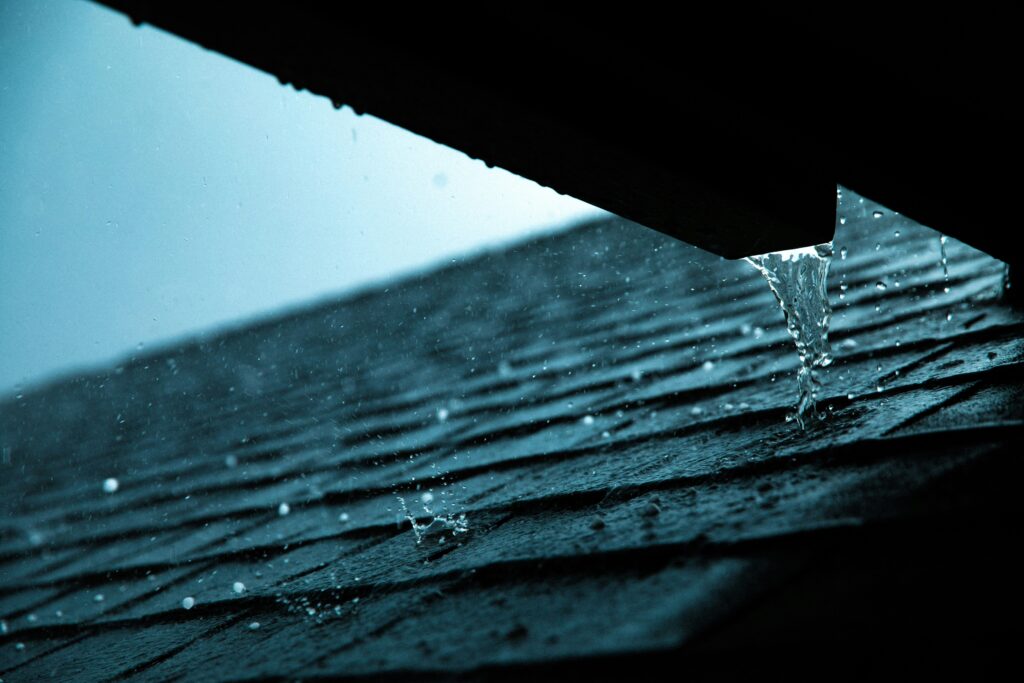Rising insurance rates have become a growing concern for homeowners, especially in high-risk areas like Colorado. With factors such as severe weather, inflation, and increased claim costs driving premiums higher, it’s more important than ever to understand the details of your homeowners insurance policy. In this post, we’ll explore why insurance rates are increasing, what specific terms and coverage limits to watch for, and how to ensure you’re adequately protected without overpaying.
Specifically, we’ll discuss:
- Reasons behind Colorado’s rising insurance rates
- What to know about wind and hail deductibles
- What ACV and RCV mean for a hail damage claim
- How insurance works when homes are vacant
If you have questions or need immediate support for your homeowners insurance claim, contact our team of experienced insurance law attorneys at Kandell, Kandell & Petrie today. One of our Denver claims advisors is standing by to help you get started.
What’s Causing Rising Insurance Rates in Colorado?
Homeowners insurance rates in Colorado have been steadily on the rise, and for many homeowners, this can cause serious financial strain. Here’s a breakdown of some of the key reasons homeowner’s insurance rates are going up in Colorado and what you need to watch for in your policy coverage
- Frequent and Severe Weather Events – Like elsewhere in the country, severe weather events are increasing in frequency and intensity. For us in Colorado, this means an increase in destructive weather-related events like hail storms and wildfires. Colorado, especially along the Front Range, is one of the most hail-prone regions in the U.S., and the extensive damage is driving up the cost of repairs and insurance claims. Moreover, wildfires often result in total property losses, which can be incredibly costly for insurers.
- Increased Claim Frequency – Not surprisingly, when you have more severe weather, you also get more homeowners filing insurance claims. More claims equal more payouts, and when insurance companies’ costs rise, they pass those costs off to policyholders in the form of higher premiums.
- Inflation – Another contributing factor to rising insurance premiums is that overall building costs have increased. The amount it takes to rebuild or repair homes has surged due to inflation and supply chain issues. This, in turn, raises the amount insurers need to pay out for claims and, like a domino, causes premiums to rise.
What to Look Out for In Your Insurance Policy
Rising insurance premiums is one way in which insurers pass off increasing expenses to homeowners. They also do so in perhaps less obvious ways. Policyholders need to be careful to fully review their coverage so they aren’t surprised by a claim denial or underpayment.
For example, one way some insurance companies try to limit payouts is through policy exclusions. Be aware if your policy has endorsements like a cosmetic damage exclusion, matching exclusion or pre-existing damage exclusion.
Another approach many insurers take is to include a separate wind and hail deductible to cover the increased costs that come with destructive hail storms.
Wind and hail deductibles differ from standard policy deductibles, and understanding how they work is crucial for protecting your home and finances. While not every homeowners insurance policy includes a separate wind and hail deductible, if yours does, it’s imperative to know what it means for your hail damage claim payout and pocketbook.
When Does a Wind and Hail Deductible Apply?
A wind and hail deductible is a specific type of deductible in some homeowners insurance policies that applies to damage caused by windstorms and hail. This deductible is separate from the standard deductible that applies to other types of covered perils. Wind and hail deductibles are only triggered by wind and hail damage.
How Much are Wind and Hail Deductibles?
Unlike standard deductibles, wind and hail deductibles are typically a percentage of the home’s insured value. Common percentages range from 1% to 5% or even higher. For a home insured for $400,000 with a 2% wind and hail deductible, the homeowner would need to pay $8,000 out-of-pocket before insurance coverage would kick in. It’s financially prudent for Coloradans to prepare for the potential financial impact of wind and hail deductibles by setting aside funds to cover the higher out-of-pocket costs in the event of a claim.
We also suggest engaging an attorney early if you suspect hail damage, as some insurers may try to deny or underpay your claim.
Understanding What ACV and RCV Mean for Your Hail Damage Claim
Two other policy terms homeowners need to understand when filing a hail damage claim in Colorado are Actual Cash Value (ACV) and Replacement Cost Value (RCV). These terms dictate how your insurance company calculates the payout for repairing or replacing hail-damaged property. Here’s what you need to know about ACV and RCV in the context of your hail damage claim.
What is Actual Cash Value (ACV)?
Actual Cash Value refers to the depreciated value of your property at the time it was damaged. When an insurance policy pays out based on ACV, the settlement reflects the current value of the item after accounting for depreciation, wear, and tear.
An ACV insurance claim payout deducts a certain percentage from the replacement cost based on the age and condition of the damaged item. ACV policies typically result in lower payouts as they consider the age of the property. For example, if your roof is 10 years old, the insurance company will reduce the payout based on its depreciated value. So, for a roof that costs $15,000 to replace but has depreciated by 50% over the years, the policyholder would receive $7,500 if they had an ACV policy.
What is Replacement Cost Value (RCV)?
Replacement Cost Value, on the other hand, provides coverage for the full cost of repairing or replacing the damaged property without factoring in depreciation. RCV policies pay the amount necessary to restore your property to its original condition and will use materials of similar kind and quality.
RCV policies ensure you can replace damaged items at today’s market prices, regardless of their age or condition. With RCV, you typically receive a higher payout, which helps cover the full cost of repairs or replacements. In the roof example from above, if your hail-damaged roof costs $15,000 to replace, an RCV policy would cover the full $15,000, assuming you meet the policy terms.
How Do ACV and RCV Affect Your Hail Damage Claim?
Depending on the type of homeowners insurance policy you have, claim payouts will differ following damage from a hail storm. Here are a few areas in which they do:
● Initial payouts – Many policies may initially pay you based on ACV and then reimburse the remaining amount up to RCV after repairs are completed. This means you may have to cover some upfront costs before receiving full compensation.
● Deductibles – Both ACV and RCV policies require you to pay a deductible, which will be subtracted from the claim settlement. Be aware that damage from hail storms may come with a separate wind and hail deductible.
● Impact on repairs – If your policy only covers ACV, you may need to pay more out-of-pocket for repairs or replacements. RCV coverage helps ensure that you can fully restore your property without facing significant out-of-pocket expenses.
In general, ACV policies come with lower upfront premiums compared to RCV policies, but the sacrifice is that you then may not have sufficient funds to cover major repairs like a totaled roof.
Lastly, another policy area to take note of when reviewing your homeowners insurance coverage has to do with vacant properties. If you own or plan to own a home that will be vacant, it’s imperative to have coverage for this unique circumstance.
How Insurance Works When Homes Are Vacant
Owning a vacant home in Colorado comes with unique challenges and risks, especially when it comes to insurance coverage. Whether the property is a second home, a rental that’s temporarily unoccupied or a home undergoing renovations, it’s crucial to understand how insurance policies treat vacant homes. Insurance companies often impose different rules and exclusions for vacant properties, and failing to secure proper coverage can leave homeowners vulnerable to significant financial loss. Here’s what you need to know about insuring a vacant home in Colorado.
What Is Considered a Vacant Home?
A home is typically considered vacant if it is unoccupied and most of the furniture and personal belongings have been removed for an extended period. Insurers usually define a home as vacant after it has been unoccupied for 30 to 60 days, although this time frame can vary by policy and provider.
Why Does Vacancy Matter for Insurance?
Insurance companies consider vacant homes to be higher risk. Without regular occupancy, homes are more susceptible to issues such as:
- Vandalism – Empty homes can attract vandals or squatters.
- Theft – Vacant homes are at greater risk of break-ins and theft, particularly if it’s clear no one is living there.
- Undetected damage – Problems like water leaks, fires, or storm damage might go unnoticed for long periods, leading to more severe damage and higher claim costs.
Because of these increased risks, standard homeowner’s insurance policies often limit or exclude coverage if the home is deemed vacant. This means that in the event of damage, a standard policy may not cover your claim and you would be responsible for significant repair costs.
What Coverage Options are Available for Vacant Homes?
To ensure your vacant home in Colorado is properly covered, you may need to consider alternative insurance options. For example, some insurance companies offer vacant home insurance policies specifically designed to cover the unique risks associated with unoccupied properties. Others may allow you to add a vacancy endorsement to your existing homeowner’s policy. This endorsement modifies the policy to provide continued coverage while the home is vacant (typically this is for a specified period). These and other endorsements can offer protection if your property will be vacant.
Protecting a Vacant Home
If your home becomes vacant, it’s essential to inform your insurance provider. Failing to do so could result in your policy being voided or a claim being denied. It’s also a good idea to stay on top of maintenance and take additional security measures. In Colorado, winterization is crucial to prevent issues like frozen pipes in vacant homes.
Contact Us at Kandell, Kandell & Petrie Law Firm
At Kandell, Kandell & Petrie, we have more than 50 years of combined legal expertise in insurance law. We specialize in property insurance disputes in Colorado, Florida and Louisiana and are here to ensure you receive the relief you deserve for your homeowners insurance claim. If you need an advocate or simply help navigating the complex insurance claim process, turn to our team of legal experts today. Call us at 720-277-9987 to speak to one of our Denver claims advisors.



